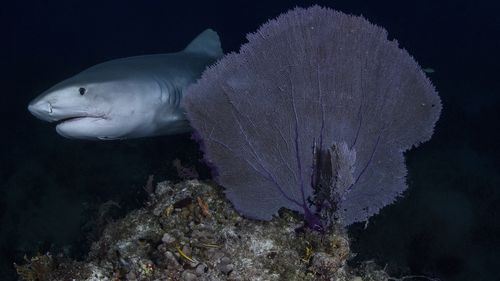A new study has warned iconic marine animals like tiger sharks, grey reef sharks, and hammerheads could soon disappear from the world, flagging the hotspots where these extinctions could occur.
Adjunct Professor Colin Simpfendorfer told 9news.com.au this makes them the second most threatened group of animals on reefs after marine mammals.


“For context for all sharks and rays globally, there are about 1200 species across all habitats, and around 35 per cent of those species are threatened.
“Coral reefs species have almost twice that level of extinction risk. We have real concerns that if we don’t do something in the near future these populations will continue to decline and eventually become extinct.”
Fishing was found to be the main threat, compounded by the risk of climate change and habitat loss.

“These species don’t handle fishing pressure well because they have low reproduction rates,” Simpfendorfer explained.
“They have limited number of young and mature quite late.
“This really means we can’t take a large proportion of them out of the water, as overfishing becomes a problem for these species quite quickly.”
Simpfendorfer said larger animals were more at risk of extinction, which could result in cascading die-offs throughout eco-systems.
Read Related Also: Missing: Toddler Boy Believed Taken by Noncustodial Mom
“Some of these species are reef predators, things like the tiger shark for example it fulfils that apex role,” he said.
“So losing them for these system has important consequences.”
The countries and reefs most at risk of these extinctions fell along the south Asian coast, and includes: India, Pakistan and Myanmar.
Reefs off South America, such as Brazil and Guyana, were also flagged as in danger.

Simpfendorfer said Australia and the Great Barrier Reef is a “bright spot”.
“There are solutions but the reality is in different parts of the world different solutions will be applicable; what works in Australia, will work some places, but not everywhere.
“We need to work with these communities to improve conservation outcomes for sharks and rays but also making sure we’re also considering the humans that rely on them”.

The world’s most bizarre deep sea sharks








